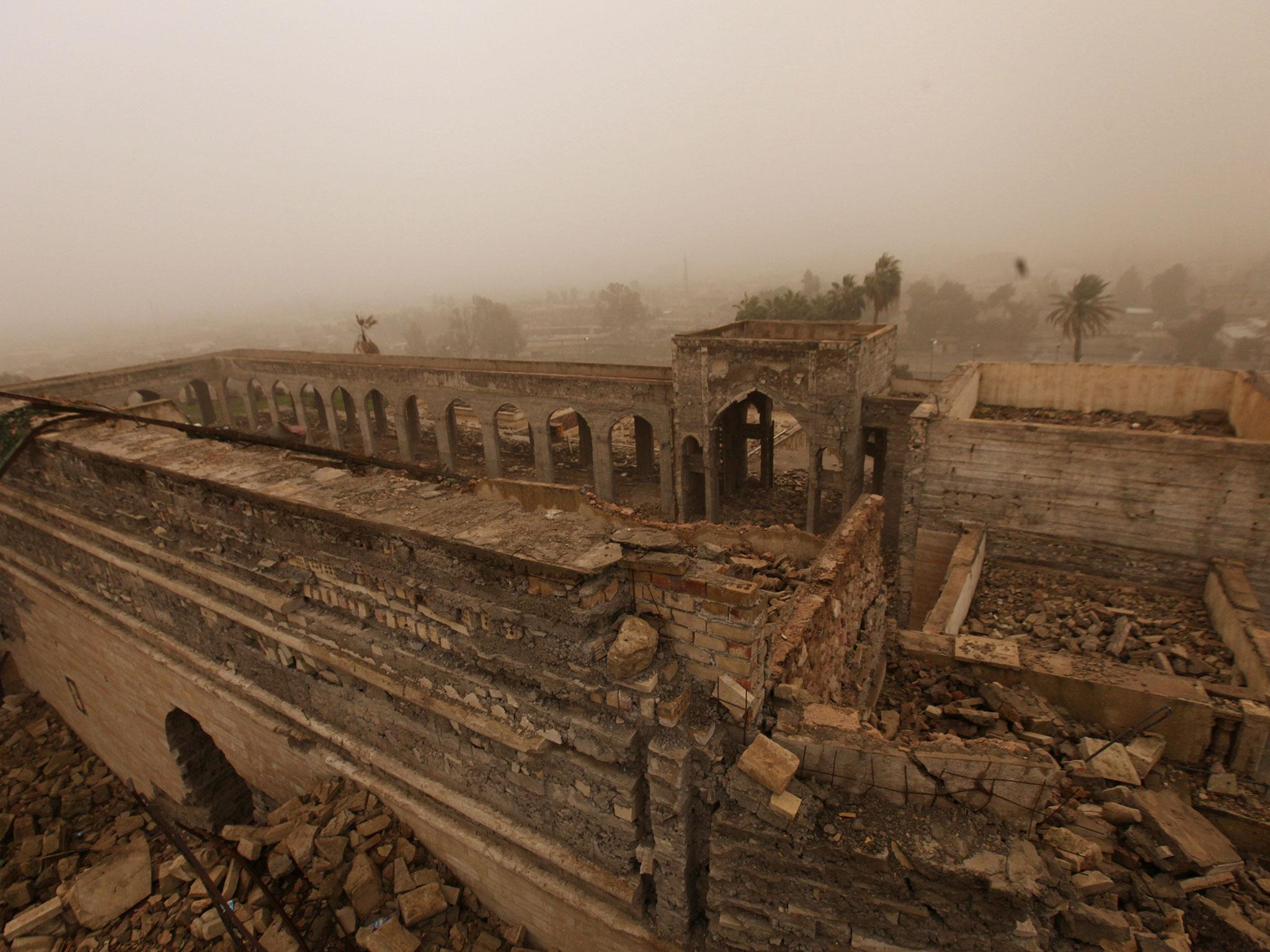Ancient 2,600-year-old Mosul palace discovered by archaeologists could collapse under Isis-destroyed shrine
Tunnels beneath Prophet Jonah's tomb in Mosul 'could collapse' imminently after Isis raided them

Your support helps us to tell the story
From reproductive rights to climate change to Big Tech, The Independent is on the ground when the story is developing. Whether it's investigating the financials of Elon Musk's pro-Trump PAC or producing our latest documentary, 'The A Word', which shines a light on the American women fighting for reproductive rights, we know how important it is to parse out the facts from the messaging.
At such a critical moment in US history, we need reporters on the ground. Your donation allows us to keep sending journalists to speak to both sides of the story.
The Independent is trusted by Americans across the entire political spectrum. And unlike many other quality news outlets, we choose not to lock Americans out of our reporting and analysis with paywalls. We believe quality journalism should be available to everyone, paid for by those who can afford it.
Your support makes all the difference.Archaeologists claim they have unearthed a 600BC palace underneath a holy shrine in Iraq destroyed by Isis.
The local researchers say there is an extra network of chambers beneath the Nebi Yunus shrine – containing what Muslims and Christians believe is the tomb of the Prophet Jonah – in eastern Mosul.
But it was the Islamic extremists who first started digging tunnels down to the palace after blowing up the shrine in 2014.
It is reportedly the first evidence of Isis tunnelling during their searches for ancient artefacts to plunder.
The tunnels are apparently home to a marble cuneiform inscription of King Esarhaddon thought to date back to the Assyrian empire in 627BC.
There are Assyrian stone sculptures of a demi-goddess, depicting the sprinkling of the “water of life”, in other parts of the tunnel.
Only a handful of cuneiforms from this period have been discovered by modern day archaeologists.
“The objects don’t match descriptions of what we thought was down there, so [the destruction of Isis] has actually led us to a fantastic find,” said Professor Eleanor Robson, chair of the British Institute for the Study of Iraq, speaking to The Telegraph.

“There’s a huge amount of history down there, not just ornamental stones. It is an opportunity to finally map the treasure-house of the world’s first great empire, from the period of its greatest success.”
Former Mosul museum curator Layla Salih, who discovered the King Esarhaddon inscription, believes Isis looted hundreds of objects before Iraqi forces recaptured.
“I can only imagine how much Daesh discovered down there,” she said.
The tunnels are reportedly in danger of collapsing imminently because of Isis’ rudimentary digging techniques
Isis is believed to have destroyed thousands of years in culture almost overnight as it retreated from Mosul in November.
Damascus claimed in January that Isis recaptured Palmyra and destroyed part of the city amphitheatre façade.
Join our commenting forum
Join thought-provoking conversations, follow other Independent readers and see their replies
Comments